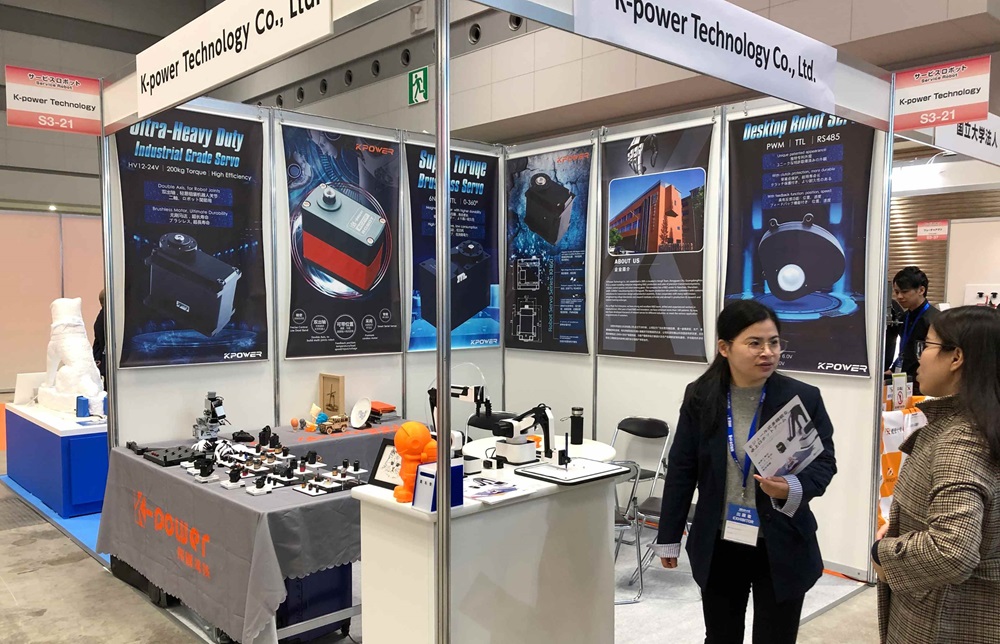Unlocking the World of Arduino and Servo Motors: Your Gateway to Creative Automation
If you're diving into the world of Arduino, chances are you've encountered the term "servo motor" in your journey. These small yet mighty components are the backbone of countless projects—from robot arms and drone gimbals to automated curtains and camera sliders. Their ability to precisely control angular position makes them an indispensable part of any maker's toolkit.

But what exactly is a servo motor? Unlike standard motors that spin freely, servo motors incorporate built-in feedback mechanisms and control circuitry. This design allows them to rotate to a specific angle, hold position, and repeat movements with remarkable accuracy. For Arduino enthusiasts, they are a gateway to transforming simple ideas into interactive, automated solutions.
Why Choose a servo motor for your Arduino projects? The advantages are many. First, their precise control capability makes them perfect for projects that require exact positioning. Second, their versatility means they can be integrated into diverse applications—robotics, RC vehicles, art installations, and even educational experiments. Third, their ease of use pairs well with Arduino microcontrollers, which provide straightforward PWM (Pulse Width Modulation) signals to control servo positions.
Getting Started: Finding a "Servo Motor Arduino Near Me"
For those eager to begin or expand their projects, the phrase "servo motor Arduino near me" is more than just a search term—it's a reflection of a thriving local electronics community. Finding servo motors locally or nearby stores not only speeds up your project timeline but also allows for hands-on inspection and advice from knowledgeable staff.
Where to Look When Searching for a Servo Motor Near You
Local Electronics Shops and Hobby Stores: Many cities host dedicated electronics retailers that stock a range of servo motors suitable for Arduino and other microcontrollers. Visiting these shops allows you to discuss your specific project needs, see product demos, and ask questions.
Maker Spaces and Community Workshops: Maker communities often have resource centers or tool libraries where members can access components like servo motors. Participating in workshops may also help you understand how to select the right servo and integrate it effectively.
Electronics Markets and DIY Fairs: At regional electronics markets or hobby fairs, vendors showcase various components, including servo motors. These events are excellent opportunities to compare brands, get direct advice, and sometimes even test motors before purchase.
Local Electronics Distributors and Suppliers: Some areas have distributor outlets specializing in electronic components catering to hobbyists and engineers. These suppliers often offer a broader selection, including premium servo motors with higher torque, speed, and durability.
What to Consider When Choosing a Servo Motor Near Me
Locating a servo motor nearby is just the first step; selecting the right one is equally crucial. Consider the following factors to ensure your project’s success:
Torque and Load Capacity: Determine the weight or resistance the servo needs to handle. For instance, a small hobby servo for moving a camera mount will have different torque requirements than a heavy-duty servo for robotics.
Size and Form Factor: Ensure the servo fits within your project's physical constraints. Sizes range from tiny micro servos to larger, high-torque variants.
Speed and Rotation Range: Some servos rotate only 180°, while others can rotate a full 360°. Speed specifications dictate how quickly the servo can move from one position to another, impacting performance in dynamic applications.
Voltage Compatibility: Match the servo’s operating voltage with your Arduino power supply. Common servos work at 4.8V to 6V, but high-performance models may require higher voltages.
Control Interface and Compatibility: Most servos are controlled via PWM signals that Arduino can generate easily. However, some advanced models might offer digital protocols or additional features like feedback or programmability.
Brand Reputation and Reviews: Opt for trusted brands or models with positive user feedback. Read reviews to gauge durability, precision, and ease of use.
Popular Brands and Models Available Locally
If you're wondering which servo brands are usually available nearby, here are some commonly found options:
SG90 Micro Servo: A budget-friendly, compact servo perfect for lightweight projects, educational demonstrations, and small robotics.
MG90S Metal Gear Servo: Offers higher torque and durability, suitable for more demanding applications.
TowerPro Servos: Widely available, with various models tailored for hobbyists and beginners.
Hitec, Futaba, and Dynamixel: Premium options often found at electronics stores or specialized suppliers; these offer superior performance for professional projects.
Getting Your Servo Motor Ready for Arduino
Once you've selected and purchased the right servo, setup becomes straightforward:
Connect the Servo: Most servos have three wires—power (usually red), ground (black or brown), and signal (white or yellow). Ensure correct connections to your Arduino and power supply.
Write Your Code: Use Arduino’s built-in Servo library for simple control. Basic code involves attaching the servo, then sending commands to set its position.
Testing Your Setup: Start with simple scripts to move the servo to different angles. Observe its response and ensure smooth operation.
Fine-Tuning: Adjust parameters, power supplies, or add feedback mechanisms if needed for greater accuracy.
Await the second part for the full comprehensive guide, including advanced control techniques, troubleshooting tips, project ideas, and more resources to make your Arduino project with servo motors a success!
Kpower has delivered professional drive system solutions to over 500 enterprise clients globally with products covering various fields such as Smart Home Systems, Automatic Electronics, Robotics, Precision Agriculture, Drones, and Industrial Automation.




































